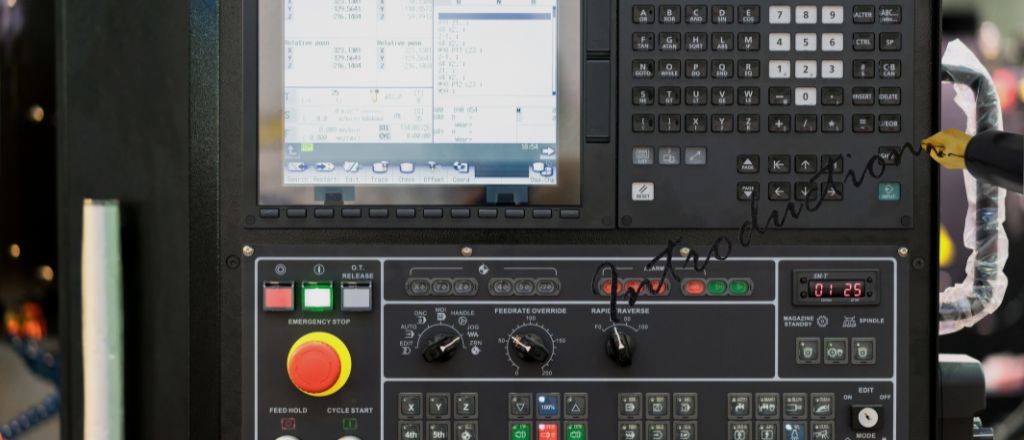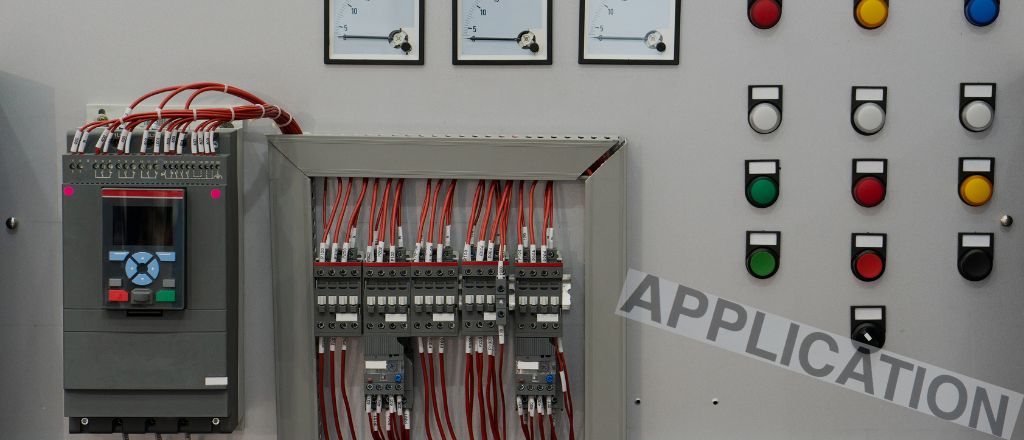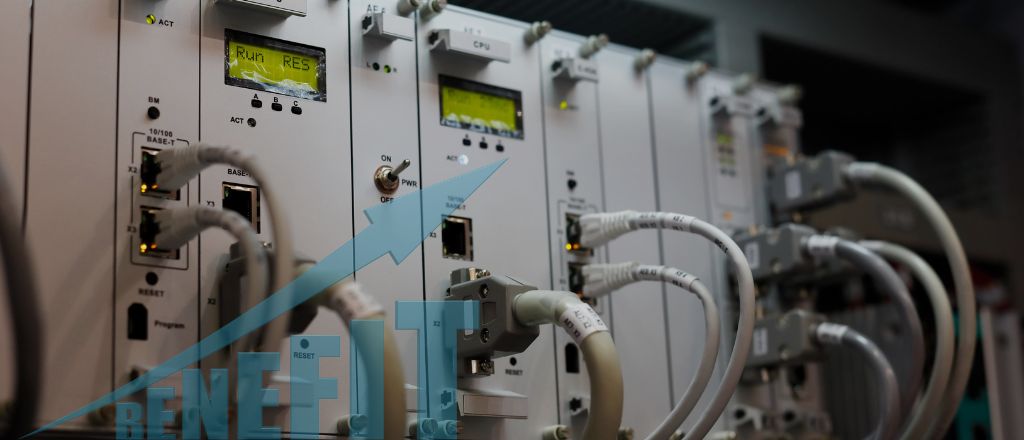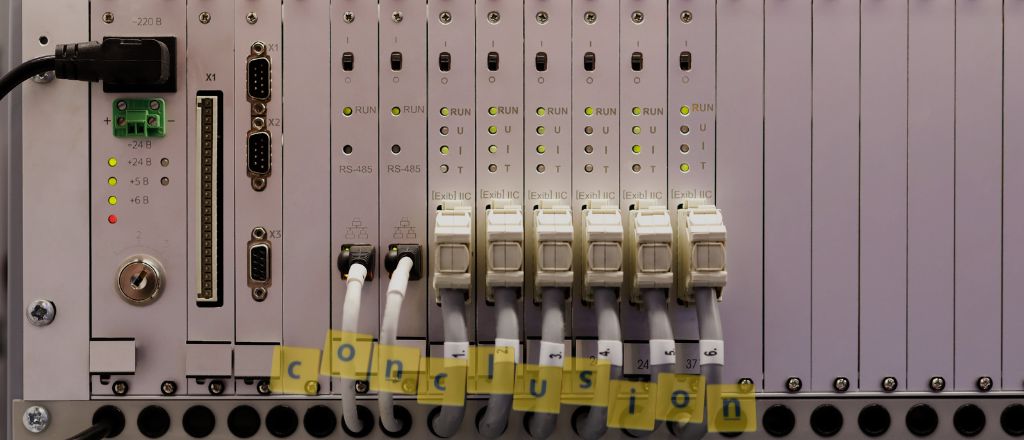Logic control in PLC refers to the process where the controller uses programmed instructions to make decisions based on input signals, guiding the operation of outputs like motors or valves.
PLC Logic Controller Introduction and Overview

A PLC (Programmable Logic Controller) is a robust industrial digital computer specifically designed to control manufacturing processes, such as assembly lines, robotic devices, or any activity that requires high reliability and ease of programming. These controllers are central to the functioning of modern industrial automation systems.
How PLC Logic Controllers Differ from Other Controllers
PLC Logic Controllers stand apart from other controllers primarily in their design and functionality. Unlike general-purpose computers or basic control systems, PLCs optimize performance for harsh industrial environments. They withstand temperature extremes, electrical noise, and mechanical shocks, making them ideal for factory settings. Additionally, PLCs offer modularity, enabling users to expand or modify the system to meet changing requirements, which traditional controllers cannot quickly achieve.
Moreover, PLCs have input and output modules tailored to handle various sensors and actuators. This capability enables seamless communication with other devices, ensuring real-time processing and control. Their programming is typically ladder logic or function block diagrams, which are user-friendly for engineers accustomed to electrical control systems.
H3: Basic Principles Behind Logic Control in PLCs
The foundation of PLC functionality lies in logic control. PLCs use programmed instructions to monitor inputs and execute outputs based on predefined conditions. Inputs can include switches, sensors, or other data-collecting devices. The PLC processes these inputs using logic gates and algorithms and sends commands to output devices such as motors, lights, or valves.
Logic control ensures that a PLC operates deterministically, executing tasks in a specific order and timeframe. The control loop, a cyclical process of reading inputs, processing logic, and updating outputs, enables precise and predictable operation. This structured approach to automation makes PLCs indispensable in scenarios requiring consistent and accurate control.
Applications of PLC Logic Controllers

Use in Simple Automation Systems
PLC Logic Controllers find applications even in basic automation systems. For example, a small-scale bottling plant may use a PLC to control conveyor belts, detect bottle positions, and manage filling mechanisms. In such scenarios, the PLC ensures that every operation occurs synchronously, eliminating the need for human intervention.
Another common application is home automation, where PLCs can control lighting, HVAC, and security systems. With the ability to integrate with sensors and actuators, PLCs deliver seamless automation, improving energy efficiency and convenience.
Examples of PLC Logic Controllers in Industry
In industrial environments, PLCs are crucial for a multitude of applications. In automotive manufacturing, PLCs manage assembly lines by controlling robotic arms, welding machines, and quality control systems. These controllers ensure precision and uniformity, which are critical in mass production.
The food and beverage industry also benefits from PLCs. For instance, they regulate temperature and timing in baking processes or control mixing and packaging lines. Similarly, in the chemical industry, PLCs monitor and adjust variables such as pressure, temperature, and flow rates to maintain optimal conditions for chemical reactions.
In power generation, PLCs oversee turbine operations, ensuring efficient energy production. Their ability to integrate with SCADA (Supervisory Control and Data Acquisition) systems enhances real-time monitoring and decision-making capabilities, proving their versatility and reliability.
The water and wastewater treatment industry also relies heavily on PLCs. These controllers regulate processes such as filtration, chemical dosing, and pumping. By automating these operations, PLCs help ensure compliance with environmental regulations while reducing operational costs.
Benefits of Using PLC Logic Controllers

Cost-Effectiveness and Reliability
PLCs offer a cost-effective solution for industrial automation. Their modular design minimizes the need for extensive hardware, reducing initial investment and maintenance costs. Unlike traditional relay-based systems, PLCs require less wiring, simplifying installation and troubleshooting.
Reliability is another significant advantage. Manufacturers design PLCs to operate continuously in challenging environments without failure. Their rugged construction and ability to handle complex logic make them a dependable choice for mission-critical applications. This reliability translates to reduced downtime and increased productivity, which are crucial factors in competitive industries.
Flexibility in Industrial Automation Systems
One of the standout features of PLCs is their flexibility. Modern PLCs support various communication protocols, enabling integration with other systems such as Human-Machine Interfaces (HMIs), SCADA, and Enterprise Resource Planning (ERP) software. This compatibility allows industries to scale their operations without overhauling existing systems.
Additionally, PLCs are reprogrammable, allowing businesses to adapt to changing requirements. For example, you can reconfigure a production line for a new product without replacing the entire control system. This adaptability reduces long-term costs and supports innovation in manufacturing processes.
Enhanced Diagnostics and Monitoring
Modern PLCs come equipped with advanced diagnostic and monitoring tools. These features allow operators to identify and address issues quickly, minimizing downtime. Real-time data collection and analysis enable predictive maintenance, helping industries avoid costly breakdowns and extend the lifespan of equipment.
Scalability and Integration
Scalability is a key advantage of PLC systems. As a business grows, its automation needs often expand. PLCs can accommodate this growth by adding new modules or integrating with additional systems. For instance, a factory might start with a single production line and later scale up to multiple lines controlled by interconnected PLCs.
Integration capabilities further enhance the utility of PLCs. They can communicate with various devices and systems, including sensors, actuators, and external databases. This seamless interaction supports centralized control and data sharing, optimizing overall efficiency.
Energy Efficiency and Sustainability
PLCs contribute to energy efficiency by optimizing industrial processes. For example, they can regulate motor speeds, adjust lighting based on occupancy, and manage heating and cooling systems. These energy-saving measures reduce operational costs and align with sustainability goals, making PLCs an environmentally responsible choice.
Conclusion

PLC Logic Controllers have revolutionized industrial automation by providing a reliable, cost-effective, and flexible solution for managing complex processes. Their ability to operate in harsh environments and adaptability ensure they remain a cornerstone of modern manufacturing and automation. PLCs deliver precision, efficiency, and scalability for simple tasks or intricate industrial operations, making them an indispensable tool for any automation strategy.
As industries continue to embrace digital transformation, the role of PLCs will only grow. Their integration with emerging technologies such as IoT (Internet of Things) and AI (Artificial Intelligence) promises to unlock new possibilities, driving innovation and efficiency in automation systems. Embracing PLC technology is a step forward and a leap toward more intelligent, sustainable industrial practices.
Frequently Asked Questions
PLC logic works by receiving input signals from sensors, processing them using programmed instructions, and sending output signals to control devices, based on logical decisions programmed by the user.
The purpose of a PLC is to automate industrial processes by controlling machinery, processes, and other devices through programmed logic, ensuring efficient and reliable operations.
The three main types of PLCs are:
- Compact PLC: A single unit with integrated I/O modules.
- Modular PLC: Composed of separate modules for flexibility and scalability.
- Rack-mounted PLC: A system that fits into a rack with multiple modular components.

